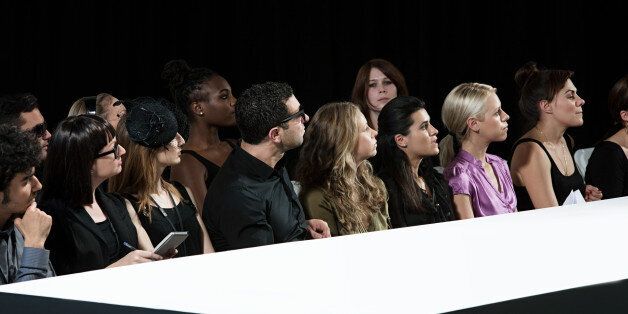
There's a huge amount to see at London Fashion Week every season, but pausing and pondering regional design talent and forces in countries around the world that shape its designers was a hugely rewarding and enriching experience at this year's International Fashion Showcase. IFS was housed in Somerset House, a stone's throw from the main LFW venue and encompassing the work of over 80 designers from 26 countries, with the theme Local/Global.
The showcase blurb poetically states that "Fashion finds its origins in many places - the agricultural, the provincial, the industrial, the urban - these places deeply influence materials, techniques and the creative process." This exhibition's beauty lies in the fertile ideas and context in which the work is presented and how the local culture and influence is maintained in the presentations of the work. Once fashion is taken out of its original context and is placed on a generic runway, for example, such a context is lost, so this is a wonderful opportunity to view the work of the designers with their heritage being showcased too. This exhibition served as a strong reminder of the power of being immersed in the whole story of the work and the designer and understanding how the work had been shaped by its geography and culture.
At the top of my agenda for this blog is finding and unearthing new developments in fashion and technology and exploring materials technology in a fashion context. This exhibition presented a plethora of stunning design, impossible to cover within the scope of this article, but visible here.
Delving into materials, the Polish designer cohort adopted the theme 'Waste Not Want Not', mixing local traditional Polish crafts with global trends such as up-cycling and slow-living. With Poland being one of the largest European markets for the trade of second-hand clothes (largely sold by the kilo - not the curated Vintage fare Londoners are used to) these designers from Poznan's School of Form found resourceful ways to re-appropriate second hand materials and garments, aiming to find a balance between contemporary luxe and the communist kitsch rejected by their parents.




Designs by Kasia Kwiatkowska, Natasza Rogozinska, Anna Kujawska, Agniesta Tomczak
Jagoda Fryca is a graduate of Poznan's School of Form and a current MA Contextual Design student at Design Academy Eindhoven. She states "I am a designer and a qualified musician. Often I don't design, but rather observe the world of objects and the world itself. I work in between the fields of textile, fashion, scenography and performance'. To that end, Fryca created up-cycled shoes under her open source DIY initiative named PRYMITWY.
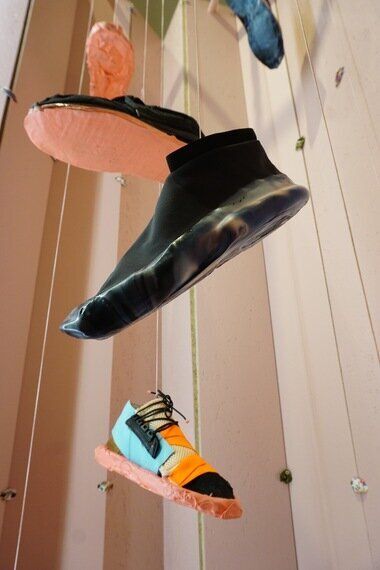

The Polish IFS presentation was supported by the Polish Institute London and coincided with the launch of Chrysalis, An Anthology of Polish Fashion, from the 1930's to the present day. Beautifully collaged pages by artist and graphic designer Tymek Borovski fill the book, which charts 90 years of designs, including those of Lola Prusac, who designed for Hermes in Paris between the wars and infused the fashion house with traditional Polish folk designs and created Modrian-inspired prints '30 years before Yves Saint Lauren'.

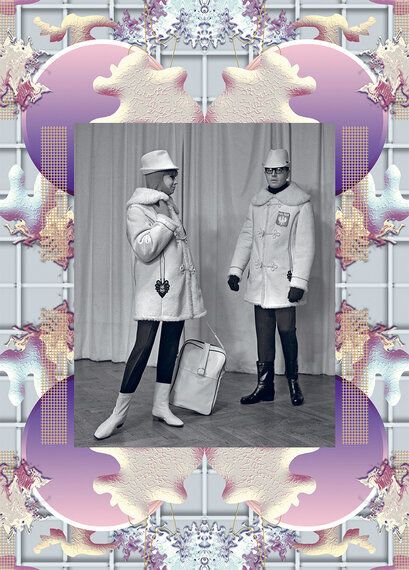
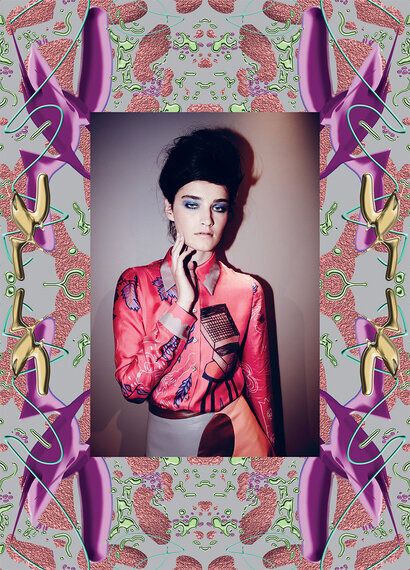
Chrysalis
Post-communist fashion is experiencing a renaissance on a global stage, the most famous expressions of this currently being Demna Gvasalia and Lotta Volkova via Balenciaga and Vetements, and Chrysalis offers a view into the origins of these designs and the social and political climate in which they were created. This newly launched Polish Fashion Stories website accompanies Chrysalis, presenting current and past Polish fashion creatives, including stylist and costume designer Hanka Podraza.
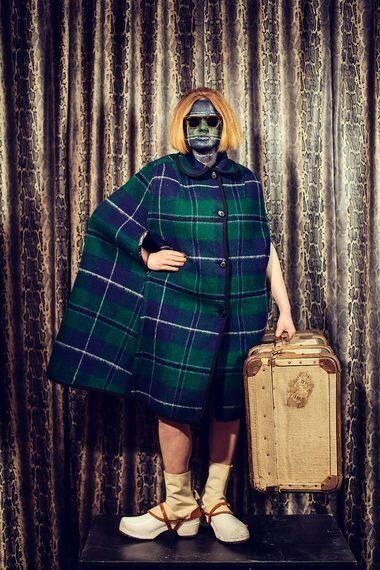

Styling by Hanka Podraza - more on her Facebook fanpage
Transfashional Lab is an exhibition including the work of Polish artists and fashion designers, in collaboration with the Austrian Cultural Forum London, running until 4th April. More info here.
Chilean architect and designer Elisa Rodriquez created a seaweed textile entitled 'experimental skin', which was handmade from seaweed typically found along the coast of Chile: Cochayuyo. Elisa and her co-founders of brand Sisa seek to utilise natural materials and develop them in an intuitive way: "We believe that this seaweed, which grows along the Chilean coast, exposes the value of our territory, and has an aesthetic potential which we find really inspiring... Collections are born out of concepts that in turn are born from investigations which don't necessarily have to do with fashion. That's why we believe SISA does not follow trends. We believe in designing from within, and not in response to what is imposed by the world".
Chilean Fine Artist Jon Jacobsen, currently an artist in residence at ShowStudio, was a collaborator on the Chile presentation at IFS and introduced me to Elisa, who explained the process involved in creating the seaweed pieces. The seaweed was collected from the shores of Santiago then thinly sliced and laid in strips alongside each other, placing them on a form to create the final shape before the seaweed dries and hardens. This process results in a solid final structure which Elisa believes in its current form is most suitable for accessories. There is potential to develop it into a softer composite material which she is interested in exploring.

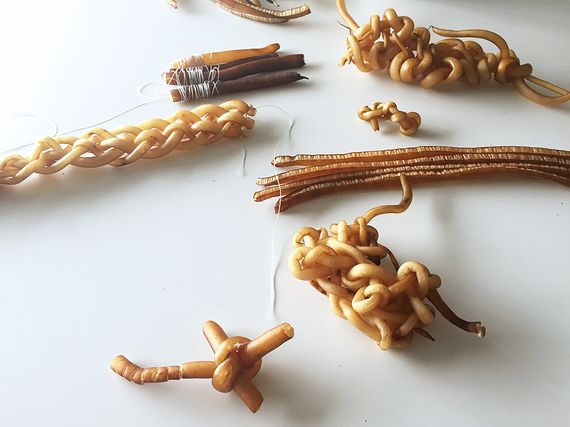
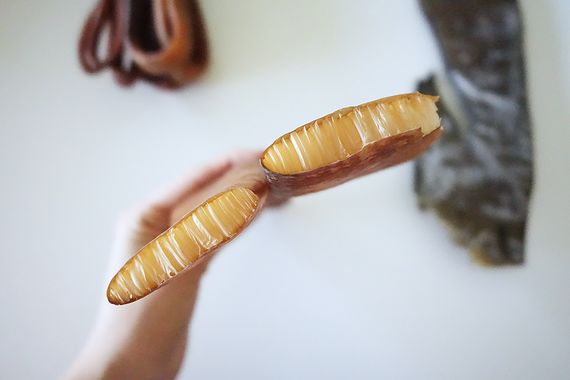

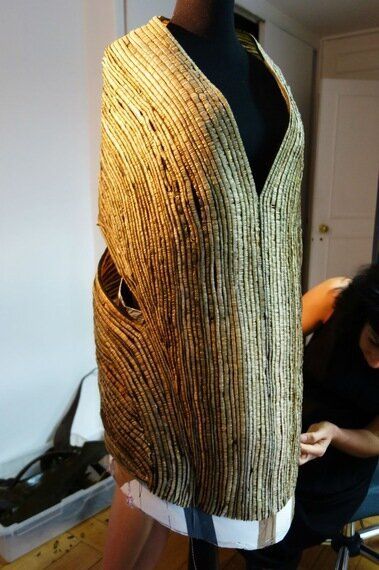
Cochayuyo on the beach, collected and sliced cochayuyo, Sisa's cochayuyo cape
Jon Jacobsen's arresting fashion film provides an organic and colourful compliment to Elisa's cultivated and organically shaped seaweed pieces.
EKEKO from Jon Jacobsen on Vimeo.
Stay tuned for part 2 of my IFS coverage on Techstyler.fashion
Follow Techstyler on Twitter, Instagram and Snapchat
